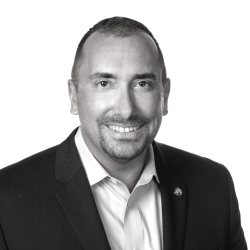In parts I and II of this blog series, we explored how the behavioral threat assessment models of pathway to violence and idea to action continuum integrate with the terrorist attack planning cycle. We also detailed how assassins, terrorists and active shooters move from ideation to attack execution. In this final piece of the series, we’ll go back to the first steps of the attack planning cycle and explore the situations that facilitate this type of thinking. In “Pathway to Violence,” Frederick Calhoun and Steve Weston suggest that identifying with a grievance is the first critical step towards someone advancing to commit an act of targeted violence.1
The diaries, journals and publications of attackers often reveal the motives behind unwanted acts. The question most asked by the general public after a violent attack is always, “why did they do it?” In today’s world of social media, we are faced with many answers to this question. Often times, social expression leads to interpretations that inspire hate. Perhaps the attacker was struggling with an internal demon that only came through in their relationships and outward expressions. In the case of the Aurora, Colorado cinema shooting, James Holmes considered the inequality in his own life and found that death was his only solution.2 He outlined his options to either ignore or delay the problem, but decided that none of these options worked for him.
In other cases, an attacker’s motive is tied to their personal identity with freedom fighter, anti-fascist, anti-authoritarian or anti-communist ideologies. A recent Turkish National Police Academy study detailed these motives as plans that bring justice through terrorist activities.3 Political movements such as Antifa have adopted a similar mantra in the U.S. and Europe. The supposed “Antifa Manual” describes white males as “the greatest evil mankind has ever known” and outlines the organization’s goal of establishing a new world order. This mindset is reinforced through previous publications where the group details their fight against fascism. Generally speaking, Antifa deploys a legal approach to remedy their cause. As with many movements, however, fringe groups exist that are more tolerant of terrorist strategies and violent acts. This type of movement is not new to the world nor the U.S. In the 1960s, a group called the Students for a Democratic Society (SDS) held to the premise that people within a society should drive social policy and not the social elite.4 The “Port Huron” manifesto authored by one of the founders suggested the group was motivated by the impending Cold War and the “human degradation symbolized by the Southern struggle against racial bigotry.”5 This group became more militant over time and began occupying university and college administrative buildings. Years after its creation, the movement began to splinter, and more violent fringe groups erupted such as Weather Underground. They were eventually declared a terrorist organization after a 1974 manifesto revealed their intention to “disrupt the empire…to incapacitate it.”6
Retaliation in support of a grievance is also a common motive for targeted violence. Al-Qaeda has expressed how their war against the west is evidence of this motive. While harming civilian populations is not a primary target, the group argues that “killing civilians raises awareness to the general population of their government’s crimes.”7 They utilize historical scenarios such as Hiroshima or crimes against the American Indians to justify their actions against civilian targets.
Self-preservation is also a common justification for targeted violence. We’ve seen this in many cases from lone gunmen retaliating against their employers for perceived wrongful termination to Elliot Rodgers, the man who in May 2014 killed six people and injured fourteen others in Isla Vista, California, attacking others as retribution for women rejecting him. We have even seen rationalized violence based on perceptions about an ideology. In an ABC News interview with members of Rose City Antifa, a masked member justified his cause for violence by saying, “fascism is an inherently violent ideology so when [Antifa] disrupts this ideology they see it as self-defense.”8
There is a never-ending amount of research necessary to continue to explore how and why people decide that violence is an acceptable alternative. Whether the violence results from the acts of a terrorist organization, active shooter or fringe protestor, it is critical for communities to understand how violence evolves in order to mitigate the risk of unwanted acts. In today’s mask-wearing environment, we have also encountered research which suggests that individuals who believe their identity is unknown or who dehumanize others are more likely to be violent.9 The question remains, what should be done to prevent targeted violence in our communities? Here are a few suggestions:
- Train people to recognize and report situations where targeted violence may evolve. The “see something, say something” campaigns are a good start. Still, we need to educate community leaders and families on better ways to prevent violence.
- Equip social services and police with the resources needed to assist those in a state of personal crisis. Law enforcement is crucial in redirecting these individuals before they become invested in the idea of violence as a solution.
- Educate law enforcement and security personnel to recognize and understand the relationship between the idea to action continuum and the attack planning cycle.
- Establish executive protection programs for corporations, regardless of whether or not they are led by an iconic individual. A target that is perceived to offer significant economic impact is at the threshold for potential targeting by terrorists and anti-fascist organizations. Corporate leaders will always be identified as part of the problem, regardless of the level of social support the corporations offer.
- Integrate protective intelligence into a company’s security to anticipate threats as they evolve.
- Promote cooperation between the public and private sectors to reduce the threat of targeted violence.
- Create a security posture that does not facilitate easy identification as a target and diminishes the risk for extended surveillance.
- Establish an extensive screening process for personnel in positions of access. The screening process for those with exclusive access to critical personnel must reflect the enhanced level of risk this proximity offers.
- Reduce a target’s virtual footprint and safeguard information that could be used in the attack planning process.
- Develop residential security strategies for key personnel, especially those with significant economic or political impact.
References:
- Calhoun & Weston – Pathway
- Holmes Journal
- Tinas, M., Ph.D. (2020). News. Retrieved August 24, 2020, from http://www.interpa.org/e2809cforeign-terrorist-fighters-in-pkk-ypg-in-syria-violent-extremism-backfirese2809d-report-news.html
- The Editors of Encyclopedia Britannica, T. (2020, July 22). Students for a Democratic Society. Retrieved August 24, 2020, from https://www.britannica.com/topic/Students-for-a-Democratic-Society
- Hayden, T. (1962). Port Huron Statement. Retrieved August 24, 2020, from http://www2.iath.virginia.edu/sixties/HTML_docs/Resources/Primary/Manifestos/SDS_Port_Huron.html
- Federal Bureau of Investigations. (2016, May 18). Weather Underground Bombings. Retrieved August 24, 2020, from https://www.fbi.gov/history/famous-cases/weather-underground-bombings
- Al-Qaeda… (2016). Lone Jihad. Inspire, 15, 45.
- Burns, D. (Writer). (2020). Antifa Members Talk Protest Tactics: ‘We Don’t Depend on Cops’ [Television broadcast]. In Antifa Members Talk Protest Tactics: ‘We Don’t Depend On Cops’. Portland, OR: NBC.
- Tinas, M., Ph.D. (2020). News. Retrieved August 24, 2020, from http://www.interpa.org/e2809cforeign-terrorist-fighters-in-pkk-ypg-in-syria-violent-extremism-backfirese2809d-report-news.html






